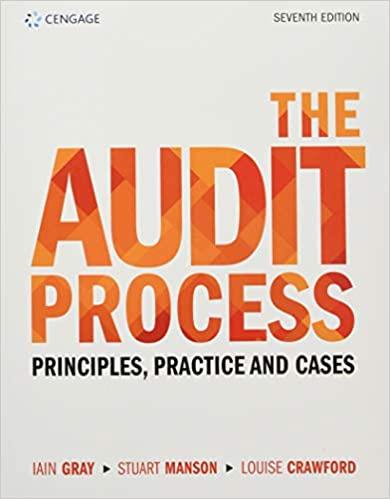Answered step by step
Verified Expert Solution
Question
1 Approved Answer
in inventory at year-end with a replacement cost of $50 each. The ending inventory at lower-of-cost-or-market is a. $9,000. b. $10,000. c. $5,000 d. $1,000.

Step by Step Solution
There are 3 Steps involved in it
Step: 1

Get Instant Access to Expert-Tailored Solutions
See step-by-step solutions with expert insights and AI powered tools for academic success
Step: 2

Step: 3

Ace Your Homework with AI
Get the answers you need in no time with our AI-driven, step-by-step assistance
Get Started


